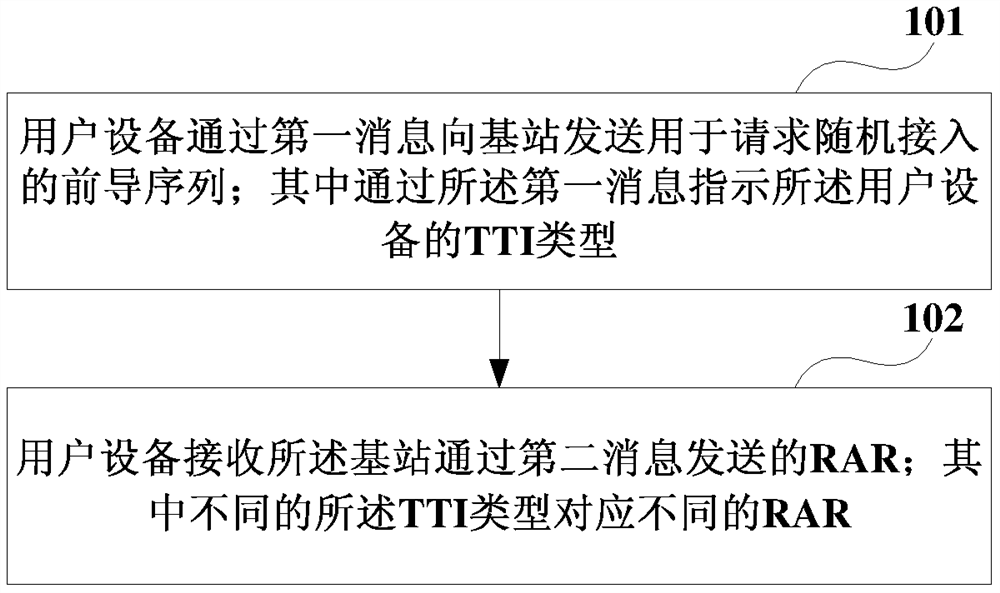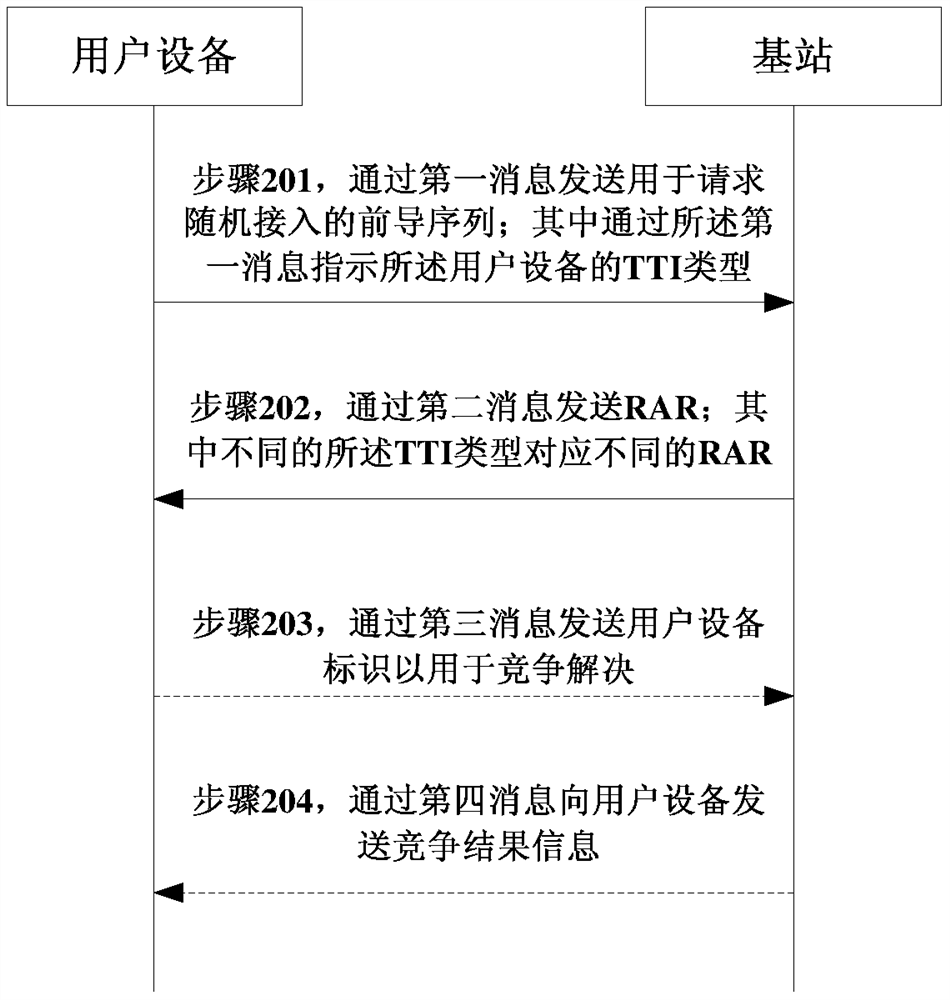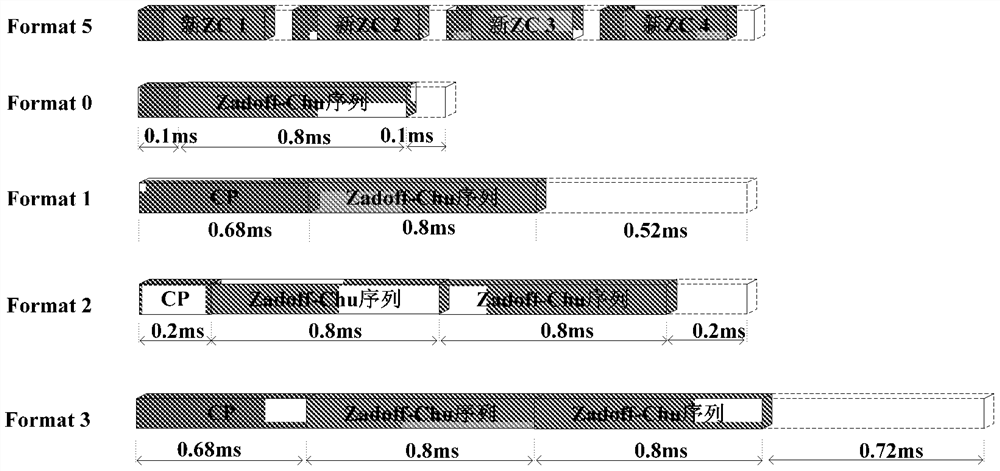Random access method, device and communication system supporting multiple transmission time intervals
A transmission time interval and random access technology, applied in the field of communication, can solve the problem of reducing service end-to-end delay and achieve the effect of reducing delay
- Summary
- Abstract
- Description
- Claims
- Application Information
AI Technical Summary
Problems solved by technology
Method used
Image
Examples
Embodiment 1
[0057] An embodiment of the present invention provides a random access method supporting multiple TTIs, which is applied to a user equipment.
[0058] figure 1 It is a schematic diagram of a random access method supporting multiple TTIs according to an embodiment of the present invention, showing the situation of the user equipment side. Such as figure 1 As shown, the random access method includes:
[0059] Step 101, the user equipment sends a preamble sequence for requesting random access to the base station through a first message; wherein the TTI type of the user equipment is indicated through the first message;
[0060] Step 102, the user equipment receives the RAR sent by the base station through the second message; where different TTI types correspond to different RARs.
[0061] figure 2 It is another schematic diagram of the random access method supporting multiple TTIs according to the embodiment of the present invention, showing the interaction between the user e...
Embodiment approach 111
[0074] The time domain resource for sending the preamble by the first user equipment is different from the time domain resource for sending the preamble by the second user equipment and is orthogonal to each other.
[0075] For example, the first user equipment uses a first time domain resource table, and the second user equipment uses a second time domain resource table; in the first time domain resource table and the second time domain resource table, The same Physical Random Access Channel (PRACH, Physical Random Access Channel) configuration index (Configuration Index) corresponds to different subframe numbers (subframe numbers).
[0076] Specifically, the traditional UE looks up the available subframe numbers in Table 5.7.1-2 in the TS 36.211 protocol according to the parameter prach-ConfigIndex configured by the base station, that is, domain resources.
[0077] Table 1: Time domain resource table used by traditional UE (same as TS 36.211 Table 5.7.1-2)
[0078]
[00...
Embodiment approach 112
[0086]The frequency domain resources used by the first user equipment to send the preamble are different from the frequency domain resources used by the second user equipment to send the preamble and are mutually orthogonal.
[0087] For example, the first user equipment uses a first parameter to select a frequency domain resource for sending the preamble, and the second user equipment uses a second parameter to select a frequency domain resource for sending the preamble.
[0088] Specifically, the traditional UE selects the frequency domain resource for sending the preamble according to the parameter prach-FreqOffset (the first parameter) configured by the base station. When the system bandwidth is greater than 1.4 MHz, new frequency domain resources can be added for UEs with short TTIs, and are orthogonal to frequency domain resources used by traditional UEs.
[0089] The base station adds a new parameter prach-FreqOffset-shorterTTI (second parameter) in the parameter PRACH-...
PUM
 Login to View More
Login to View More Abstract
Description
Claims
Application Information
 Login to View More
Login to View More - R&D
- Intellectual Property
- Life Sciences
- Materials
- Tech Scout
- Unparalleled Data Quality
- Higher Quality Content
- 60% Fewer Hallucinations
Browse by: Latest US Patents, China's latest patents, Technical Efficacy Thesaurus, Application Domain, Technology Topic, Popular Technical Reports.
© 2025 PatSnap. All rights reserved.Legal|Privacy policy|Modern Slavery Act Transparency Statement|Sitemap|About US| Contact US: help@patsnap.com



